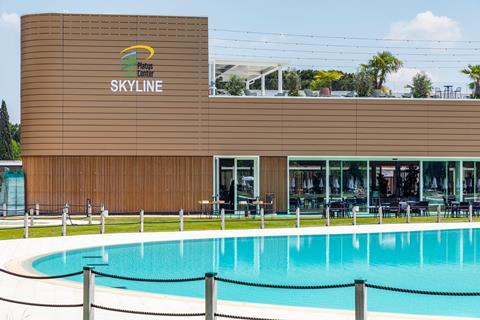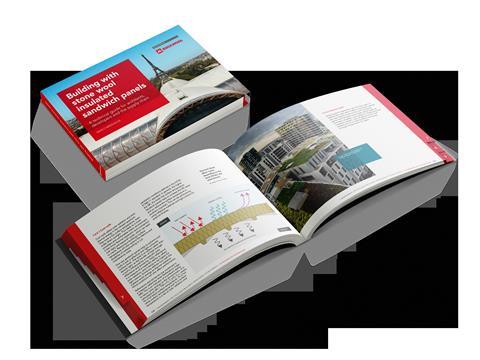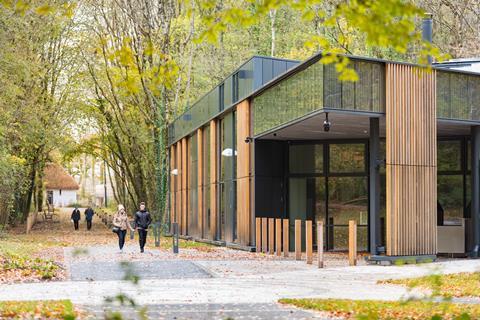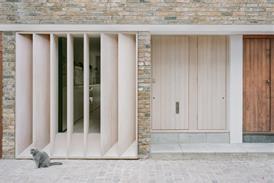Professor Marco Imperadori’s new book, Building with Stone Wool Insulated Sandwich Panels, explores the science, aesthetics, and real-world applications of the previously underexamined technology
Most architects today seek to align themselves with the New European Bauhaus ideals of inclusion, aesthetics, and sustainability — without compromising on the practical needs of industrial and commercial buildings.

When it comes to insulation, this means that building designers are looking to strike a delicate balance between fire resilience, acoustic and thermal performance, and potential for visual appeal.
In his new book, Professor Marco Imperadori of the Politecnico di Milano explores a solution: the stone wool insulated sandwich panel.
The book sets out to demonstrate the technology’s versatility in different climates and architectural demands.
Across twenty-six case studies, ranging from a stadium to a mountain hut, it offers insights into innovative techniques for enhancing building sustainability while ensuring aesthetic integrity.
Examples of the case studies include:
- Gweithdy, an award-winning and BREEAM-certified wood-facade pavilion showcasing Welsh craftmanship at the St Fagans National Museum in Cardiff, Wales
- The jewel-boxed Volvo showroom at the EURO KAS Volvo dealership in Katowice, Poland
- The smart and sustainable Platys Centre, a multi-sport entertainment and leisure facility in Verona, Italy

The first of its kind, the reference book fills a gap in the technical literature between stone wool and sandwich panels, providing practical details, data, and guidance on usage.
The book establishes the technology’s mature market position and ability to meet the current challenges faced by the construction, architecture, and related industries, highlighting the key benefits:
- Fire resilience: Stone wool is non-combustible, improving building safety by preventing the spread of fires.
- Acoustic performance: These panels offer high acoustic insulation properties, helping in soundproofing and reducing noise pollution, which is especially beneficial in noisy industrial environments or urban settings.
- Thermal performance: Stone wool insulated sandwich panels help to maintain interior temperature stability, reducing energy costs for heating or cooling.
- Durability: Stone wool is known for its robustness and durability, making it suitable for harsh environmental conditions without deteriorating or losing performance over time.
- Moisture repellence: Stone wool inherently repels moisture, reducing the risk of mold and deterioration caused by damp conditions.
- Recyclability: Stone wool is made from natural and abundant materials, making it a sustainable choice with a low-waste and low-carbon impact. Also, the sandwich panel’s separate steel and stone wool components make it easily recyclable.
- Cost-effectiveness: Stone wool sandwich panels are a cost-effective choice due to their durability, minimal need for long-term maintenance, and fast installation on site.

Along with all of the above, they are an adaptable canvas for all kinds of aesthetic visions for façades, walls, floors, ceilings and roofs.
Examples in the book include natural wood grain finishes that complement the surrounding environment, but also sleek and contemporary styles in metal, glass, and concrete designed to stand out.
Despite the ever-closer regulation of building design, the typologies and functions of the spaces in which people live, work, and play are more variable than ever.
The sandwich panel aligns with the new philosophy of dry modular construction, which is supported by innovative retrofitting and Building Information Modelling (BIM) techniques.
In contrast to inertial wet construction, these spaces can evolve and change over time, according to the needs and usage of commercial and residential end users.

“With the release of this book, we hope not just to inform but to inspire both industry leaders and young professionals.Investors, building owners, construction professionals, and architects — it has something in store for each of them,” Imperadori said.
“The variety of case studies we delve into shows a breadth of elements to consider when implementing insulation: building types, design and utilisation objectives, aesthetic finishes, sustainability, waste minimisation, and more. The stone wool sandwich panel stands up to scrutiny on every point and proves itself an excellent form of insulation.”
In an industry which is always changing, the best solutions are those which are most able to adapt. Sustainability is now an expectation for customers, and architects’ approaches to incorporating insulation must change to meet it. With their flexible function, aesthetics, and excellent performance, stone wool insulated sandwich panels are ready for the challenge.
Click here to access the digital version of the reference book!















